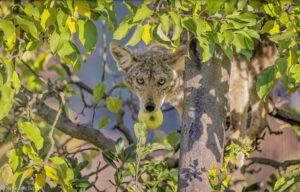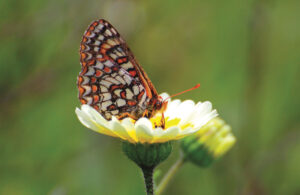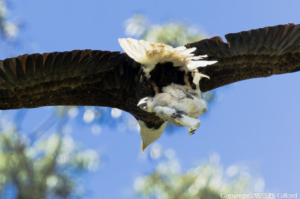Trish Carney is a San Raphael-based wildlife photographer who strives to capture the moments that convey an animal’s character and spirit. Trish earned a Bachelor’s of Fine Arts at the University of Colorado in Boulder and an M.F.A. at the San Francisco Art Institute. Her work has been published in the New York Times, Orion magazine, in the book Exultant Ark by Jonathan Balcomb (UC Press), and in Bay Nature. She received a Marin Arts Council Grant for Photography for her series “How Do You Apologize?”, and through October 24th, the Emeryville Art Exhibition is showing Carney’s palladium prints of birds. See more on her website.
BN: What’s your favorite place to look for wildlife in the Bay Area?
TC: My favorite haunts are the Marin portion of the Golden Gate National Recreation Area and the Bolinas Ridge area of Mount Tamalpais State Park. I’m spending a lot of time now in the Marin Headlands, where I’ve been working on a series of images about a particular place I love and the species that live there.
BN: What is your approach to taking pictures of wild animals?
TC: I photograph the wildlife I encounter on the trails. And I make photographs that give shape to–and connect with–the quiet and often fleeting moments of these encounters. When I see an animal heading my direction I stay put, stay visible, and let the animal approach me–if it chooses to. Sometimes this takes quite a while; a hike may turn into a very long sit. But the more time I have to observe the animal, the more in tune I feel with its behavior.
I believe strongly in etiquette, and my code of conduct requires me to be patient and respectful of my subjects, their surroundings, and their personal space. I never cut off an animal’s path or harass or chase an animal. I read their body language and pay close attention to their “back off” signals. No image is worth causing an animal to become stressed. But it’s a delicate balance, learning how to photograph wildlife without interfering with the animals’ life cycles. Interacting with animals becomes a lesson in humility and respect for their wild lives.
BN: Which particular wildlife sightings stand out for you? Do you have a favorite species?
TC: Bobcats capture my imagination and represent the essence of the local wild to me; I count myself lucky every time I see one. It’s their independence, their elusiveness, their wild beauty, that they need to kill to live, that makes the bobcat my favorite local wild species.
One winter, during bobcat mating season, while walking down a trail I heard an unfamiliar sound–three separate calls that started then stopped, a deep-toned, drawn-out nyaa…oowl. Not a bird call, but definitely a wild animal sound. I continued further along the trail, and then, along the trail’s edge, I happened upon a bobcat listening for prey in the grass. I knelt down at eye-level with the bobcat, and we exchanged glances. The cat approached me until he was within 10 feet, all the while keeping his eye on me. I sat very still, not scared, but hyperaware of the cat’s movement and our physical proximity, and I sensed a mutual trust that neither of us intended harm to the other.
The cat turned, walked on about 30 feet down the trail, and began rubbing his face all over a bush, then he turned, backed up to the bush with his tail held high, and sprayed, marking the bush with his scent–all the while making those wild nyaa…oowl calls. It was so exhilarating! He made his way down the trail, scent-marking and spraying various bushes, and then disappeared into the brush where he continued calling, on and off for about an hour and a half.
I’d also like to tell you about another bobcat sighting that stands out in my mind. Last July I was photographing brush rabbits along a trail when I heard branches crashing. I approached the sound and spotted a young bobcat climbing down a eucalyptus. I peered at it through my viewfinder and then, to my surprise, another cat–an adult male–entered the scene in my viewfinder, chasing the first bobcat back up the tree. The younger bobcat looked stressed, and it urinated throughout the attack, which was lightning fast, intense, and very brief. Then the aggressor descended, positioning himself at the base of the eucalyptus where he alternately groomed himself, glanced up the trunk, and slept. Eventually he went back up the tree, where he stared up at the smaller cat for a moment. Then he climbed down and disappeared into the foliage. I waited for a very long time but I never saw the small cat leave the tree. (See Carney’s video of the bobcats fighting in a tree.)

.jpg)



